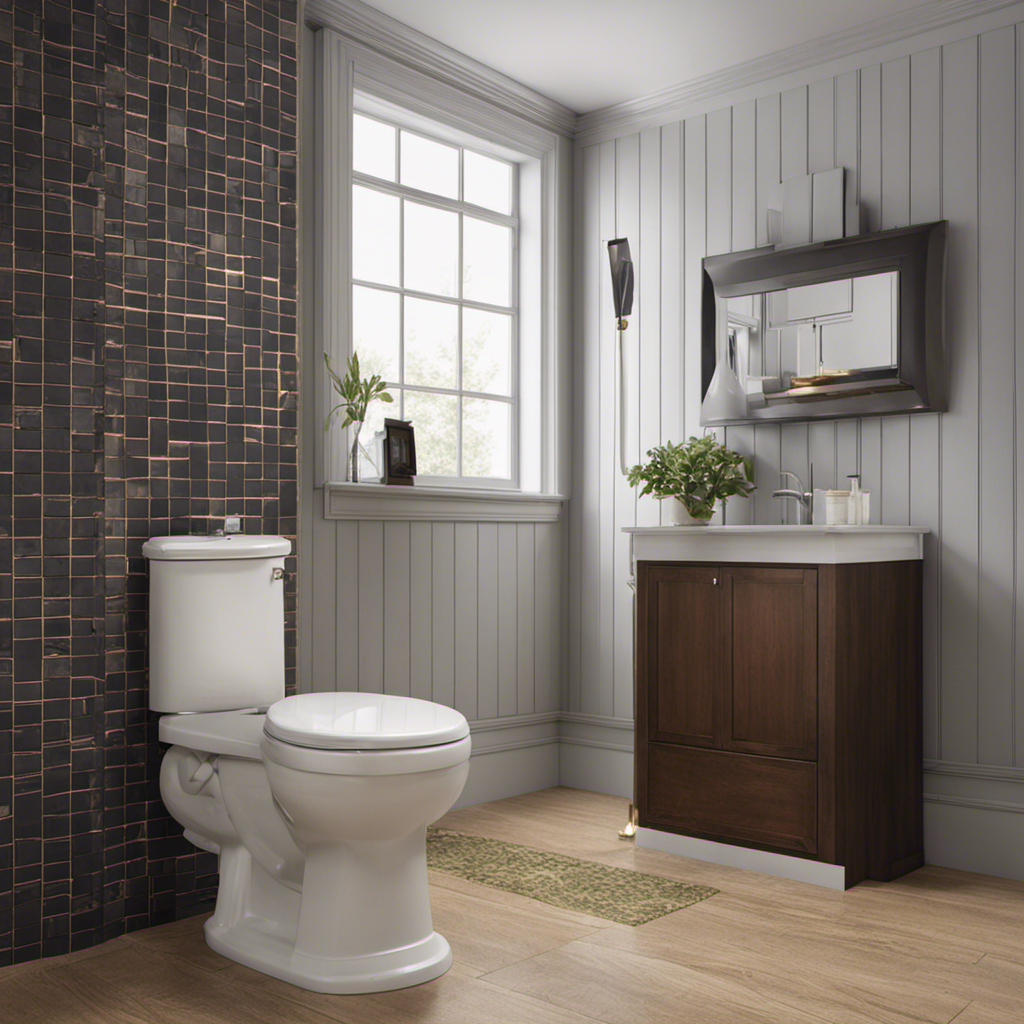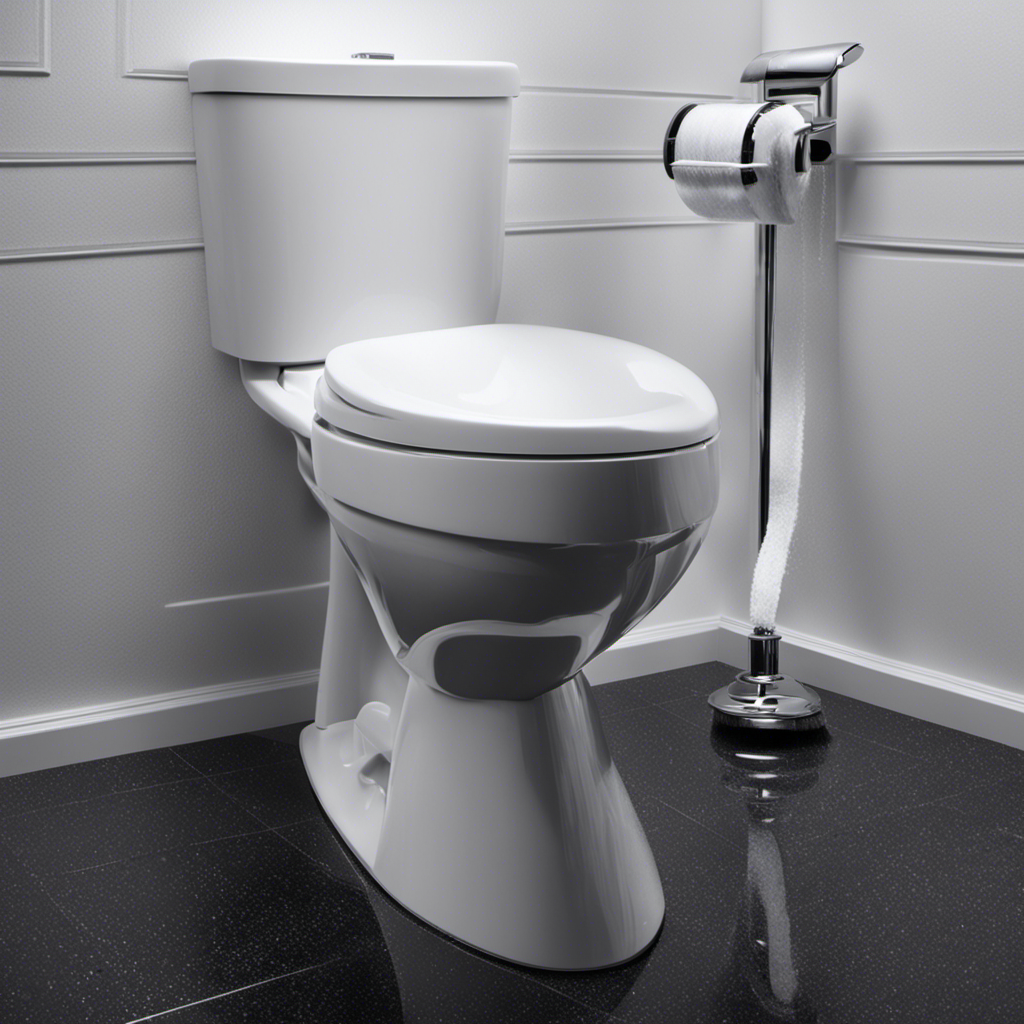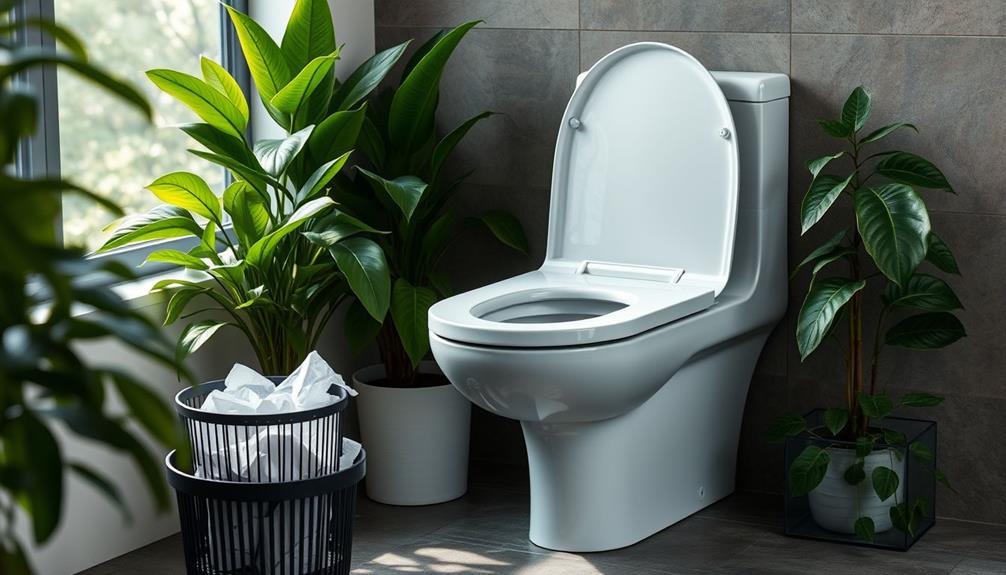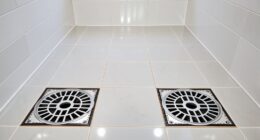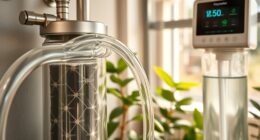In this article, I’ll share some practical tips on how to avoid clogging the toilet.
Trust me, I’ve had my fair share of embarrassing experiences with this issue. So, if you’re tired of dealing with messy and inconvenient toilet clogs, you’ve come to the right place.
By understanding the limitations of your toilet, using toilet paper wisely, employing proper flushing techniques, and avoiding non-flushable items, you can keep your toilet clog-free and your bathroom stress-free.
Let’s dive in!
Key Takeaways
- Understanding the limitations of the toilet can help prevent clogs.
- Proper toilet paper usage, such as using the right amount and considering eco-friendly alternatives, can prevent clogs.
- Flushing techniques, such as using short bursts of water and adjusting based on the toilet bowl shape, can reduce the risk of clogs.
- Avoiding the use of non-flushable items and maintaining the toilet regularly can help prevent clogs.
Understanding the Toilet’s Limitations
Before you flush, it’s important to know the toilet’s limitations. Understanding how toilet water pressure and toilet bowl shape can affect its performance can save you from unwanted clogs.
Toilet water pressure plays a crucial role in pushing waste down the drain. If the water pressure is low, it might not be strong enough to carry away solid waste, resulting in clogs. On the other hand, high water pressure can cause splashing and make it difficult for waste to be fully flushed away.
Additionally, the shape of the toilet bowl can impact how efficiently it flushes. Some bowls have a more compact design, while others are larger and allow for better water flow.
Transitioning into the next section, it’s also important to consider proper toilet paper usage to avoid clogging issues.
Proper Toilet Paper Usage
To avoid any issues, make sure you’re using the right amount of toilet paper when you use the restroom. It’s important to be mindful of the environment and consider eco-friendly bathroom products.
While toilet paper is the go-to choice for most people, there are alternatives that are more sustainable and gentle on the planet. One option is bamboo toilet paper, which is biodegradable and made from a renewable resource.
Another alternative is reusable cloth wipes, which can be washed and reused, reducing waste.
Additionally, bidets are becoming increasingly popular and are a great way to reduce the need for excessive toilet paper usage.
Flushing Techniques for Preventing Clogs
When you flush, make sure you use short, quick bursts of water to prevent any potential issues. This is especially important when it comes to preventing clogs in your toilet. The key is to ensure that the toilet water pressure is strong enough to effectively remove waste, while also being gentle enough to avoid any blockages. Additionally, the shape of the toilet bowl can also affect the flushing process. Some toilet bowls are designed with a more narrow shape, which can increase the chances of clogs occurring. It’s important to be mindful of this and adjust your flushing technique accordingly. By using short, quick bursts of water and being aware of the toilet bowl shape, you can greatly reduce the risk of clogs and keep your toilet running smoothly.
| Toilets with High Water Pressure | Toilets with Low Water Pressure | Toilets with Moderate Water Pressure |
|---|---|---|
| Toto Drake II | American Standard Cadet 3 | Kohler Cimarron |
| Kohler Wellworth | Glacier Bay 1-piece | American Standard Champion 4 |
| American Standard Champion 4 | Kohler Cimarron | Toto Drake II |
| Sterling Windham | Toto Drake II | Kohler Wellworth |
| Gerber Viper | Sterling Riverton | Glacier Bay 1-piece |
Avoiding the Use of Non-Flushable Items
Using non-flushable items can lead to potential issues and blockages in your plumbing system, so it’s important to avoid them. Not only can these items cause clogs, but they can also have a negative impact on the overall health of your plumbing system.
When non-flushable items are flushed down the toilet, they can get stuck in the pipes, causing backups and even damaging the system. To prevent this, it’s essential to only flush toilet paper and waste.
Instead of using non-flushable items, consider using eco-friendly alternatives such as biodegradable wipes or reusable cloth wipes. These alternatives are not only better for the environment, but they also reduce the risk of clogs and help maintain a healthy plumbing system.
Transitioning into the subsequent section about maintenance tips for a clog-free toilet, it’s important to follow these guidelines to ensure your toilet remains free from clogs.
Maintenance Tips for a Clog-Free Toilet
Regularly maintaining your toilet can help prevent blockages and keep your plumbing system running smoothly. Here are three essential toilet maintenance tips to ensure a clog-free experience:
-
Keep the toilet clean: Regularly clean the bowl, rim, and tank to prevent the buildup of mineral deposits, bacteria, and mold. Use a toilet brush and cleaning solution to thoroughly scrub the surfaces.
-
Avoid flushing non-flushable items: Only flush toilet paper and human waste down the toilet. Avoid flushing items like feminine hygiene products, cotton balls, wipes, or paper towels, as they can clog the pipes.
-
Use proper unclogging techniques: If you notice slow drainage or a clog, try using a plunger first. If that doesn’t work, consider using a toilet auger or snake to remove the blockage. Avoid using harsh chemical drain cleaners, as they can damage your plumbing system.
Frequently Asked Questions
Can I Flush Wet Wipes Down the Toilet?
Yes, you can’t flush wet wipes down the toilet. They are not flushable, even if the package says so. Instead, use flushable wipes alternatives or dispose of wet wipes properly in the trash.
Is It Okay to Use Excessive Amounts of Toilet Paper?
Using excessive amounts of toilet paper can lead to clogs and have a negative impact on the environment. Consider using toilet paper alternatives like bidets or wet wipes sparingly to minimize waste and prevent clogs.
How Often Should I Clean the Toilet Bowl to Prevent Clogs?
To prevent toilet clogs, I clean the bowl regularly. It’s a necessary chore, but hey, a small price to pay for a clog-free life. Follow these toilet maintenance tips, and you’ll thank me later.
Can I Pour Chemicals Down the Toilet to Clear a Clog?
Yes, you can pour chemicals down the toilet to clear a clog, but it’s not the best solution. Instead, try using natural remedies like baking soda and vinegar or a plunger to prevent toilet clogs.
What Should I Do if My Toilet Is Already Clogged?
When my toilet is clogged, I use natural home remedies or try unclogging without a plunger. It’s important to act quickly, using methods like hot water, dish soap, or a wire hanger. Maintenance is key.
Conclusion
In conclusion, taking the time to understand and implement proper toilet habits can save you from the frustration and embarrassment of a clogged toilet.
Remember, just like a delicate ecosystem, your toilet has its limitations. By using the right amount of toilet paper and employing the correct flushing techniques, you can prevent clogs and ensure a smooth and efficient system.
It’s like driving a car smoothly on a well-maintained road, avoiding potholes and bumps.
So, let’s keep our toilets clog-free by practicing these simple yet effective tips.

